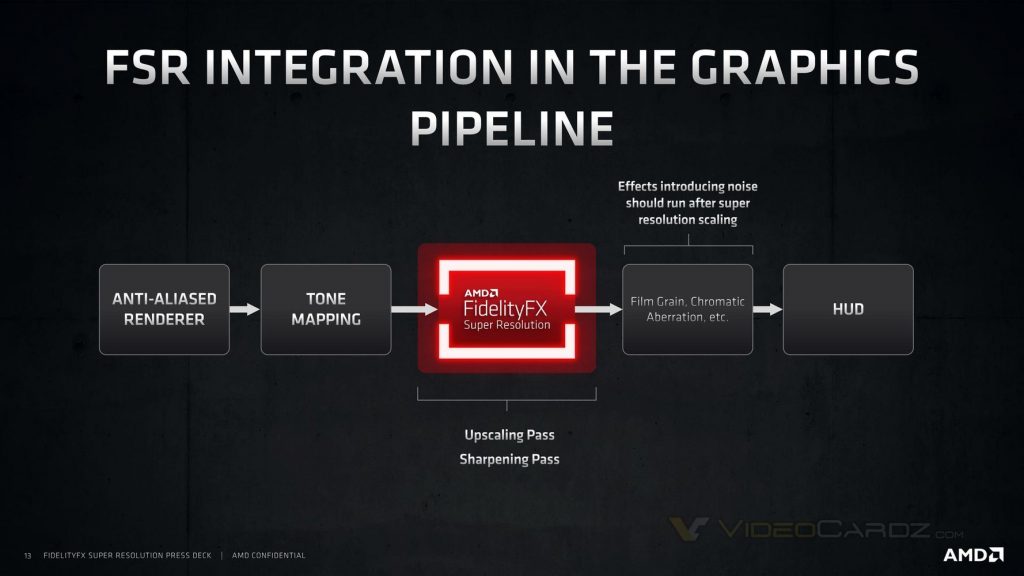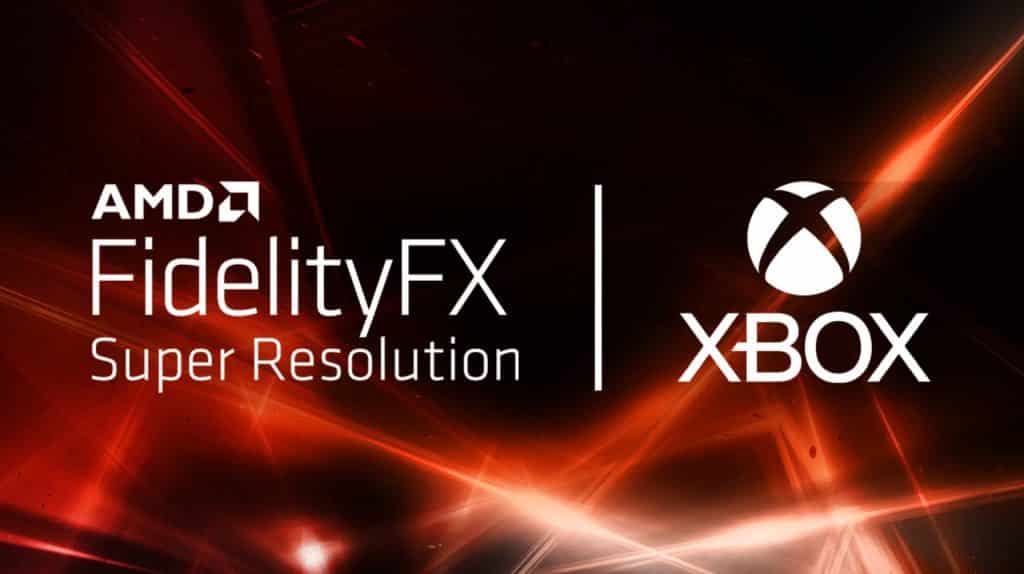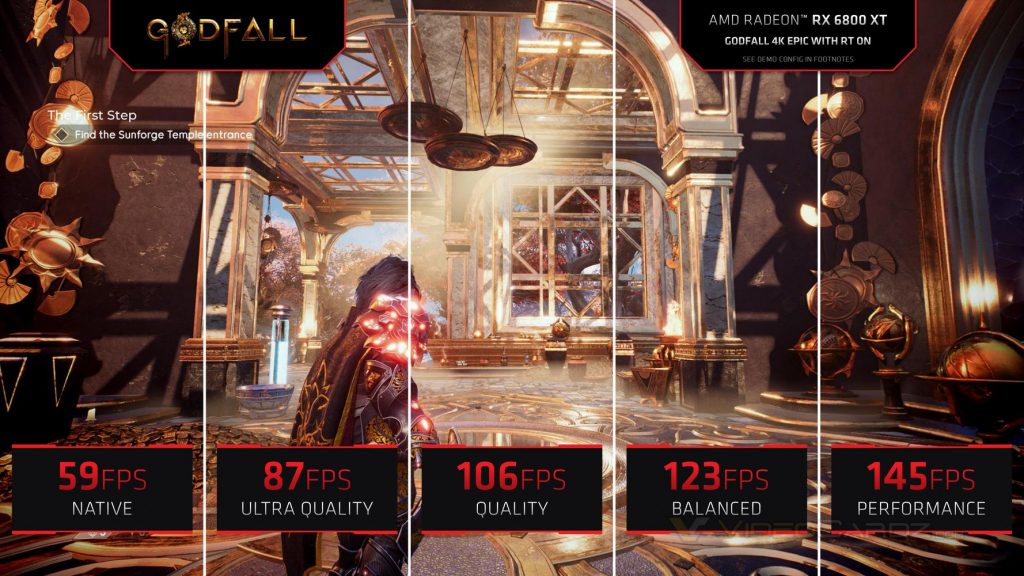AMD announced its highly-anticipated Fidelity FX Super Resolution (FSR) this year as their new spatial upscaling technique that was somehow a competitor to NVIDIA’s existing machine learning based DLSS. While the latter is a more refined upscaling only limited to RTX graphics cards, AMD’s tech is aimed to be more open-source and cross-platform compatible.
Already a lot of games and game engines have implemented FSR, now, regardless of the kind of hardware you are using, with AMD’s software, if the application supports AMD’s open-source tech you can easily use it to a free performance boost. Even old GPUs or consoles can use AMD’s tech and use different levels of upscaling to make them usable again.
In 2021, games have become more challenging, detailed and intuitive than ever while GPUs are still lagging behind to provide enough horsepower to run them. Technologies like AMD FSR are needed to narrow this gap and while AMD’s arch rival Intel is also entering into the GPU business, AMD remains optimistic.
Especially as we know Intel is preparing well before entering GPU business, made their own ML based Intel Xess AI upscaling technique. So, AMD’s Jay Marsden, who has played a key role in AMD FidelityFX Super Resolution’s development has spoken in an exclusive interview with us.

Jay Marsden is Senior Manager of Software Marketing at AMD. He is responsible for the overall marketing strategy for AMD APU/GPU software supporting AMD Radeon Software Adrenalin Edition and AMD Radeon PRO Software for Enterprise solutions, as well as a marketing strategy for key developers technologies, such as the FidelityFX™ open-source developer software suite including AMD FidelityFX Super Resolution. Jay is a veteran of the high-tech industry with over 25 years of experience working both at ATI and AMD.
We have talked about a number of various topics, mainly surrounding Fidelity FX Super Resolution and its plans, its progress while also talking more on its rivals both Intel and NVIDIA this time. Here is the entire interview:
Q: Any comments on XeSS? Like NVIDIA, Intel has opted to go with a temporal + neural network-based upscaling technique.
A: AMD believes that industry standards and open-source technologies drive the industry forward. We are glad to see Intel intending to provide a version of their XeSS upscaling technology that will run on multiple platforms and is committing to making it open source.

Q: Was this something that AMD planned or plans to do, as a spatial upscaler will never quite produce the same quality of the image as a complex temporal/AI-based upscaler that’s constantly improving?
A: Using spatial upscaling for FSR 1.0 achieved the goals we set forth for the technology, namely providing a compelling upscaling solution based on industry standards that is open source with cross-platform support and one that strikes a great balance between image quality and performance.
At the “Ultra Quality” setting at normal gaming viewing distances, FSR is almost indistinguishable from native-resolution experiences. At lower FSR settings there may be some noticeable quality differences from native resolution, but the outstanding performance benefits FSR offers allows gamers to play the latest AAA games at higher detail settings and higher resolutions on as many graphics cards as possible, both old and new.
That said, we are continually exploring on new and innovative ways to improve and build upon FSR 1.0 – including looking at technologies like temporal/AI-based upscaling – and we will provide more information on future plans when available.

Q: NVIDIA recently stated that more than 100 titles now support DLSS. May we know how many titles support FSR at the moment, or will anytime soon?
A: Currently 50 games and 2 commercial game engines already have support for FSR, more are expected to add support by the end of this year. Notably, we have built this roster of incredible games in just 4 months after we launched the technology in June. You can find a list of supported games and game engines here.
Q: Other than wider integration and adoption, what were the primary motivations behind FSR? Like Intel, AMD could have gone with a neural network-trained.
A: Our overall goal with FSR 1.0 was to provide a compelling upscaling solution based on industry standards that is open source and that does not require any specialized proprietary hardware so it can be supported across a wide range of platforms for all gamers to benefit. We also wanted to provide a solution that provided a great balance between performance and image quality.
It was important to make FSR a cross-platform solution so that it allows as many gamers as possible to benefit from the technology. In addition, open-source is very important to game developers, so this was also a key objective. Not only does it encourage wider adoption, but it also makes integration easier and allows the technique to be expanded or adapted to fit developers’ individual needs.

Finding the right balance between quality and performance was also a major focus. At the “Ultra Quality” setting FSR is almost indistinguishable from native resolution. FSR also offers lower settings that don’t quite achieve native resolution, but the incredible performance benefits FSR offers lets gamers play the latest AAA titles at higher detail settings and higher resolutions on as many graphics cards as possible.
However, it’s important not to assume “Machine Learning” is a magic wand that solves all problems. It can be a very powerful tool, but it’s not the only way to solve problems. Also, there are some trade-offs when using ML. For example, using ML in a real-time context might mean the loss of portability, performance, and – if not done right – even some quality. That said, ML shows promise, and AMD is heavily investing in ML R&D on a number of fronts.
See our review on AMD’s FSR here.
Thanks AMD India for the interview, also if you have any questions or any queries about FSR, don’t hesitate to comment below this article, we will make sure AMD reverts back to you. Also, leave your thoughts on FSR and the improvements you like to see from it in future.




